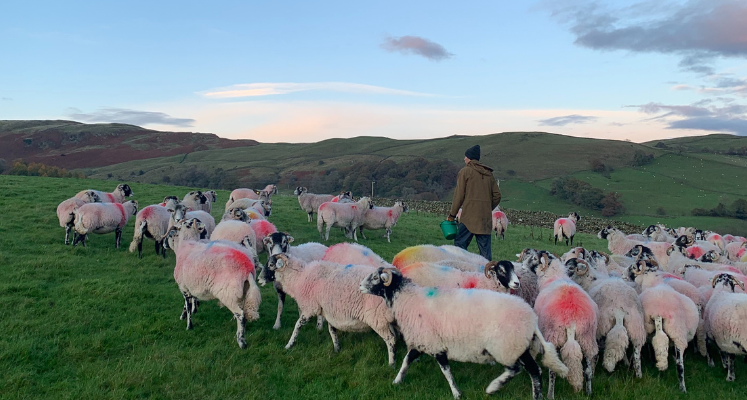
19 October 2023
Lake District draft ewe sales represent the start of autumn in the farming calendar. Draft ewes are female breeding sheep that have been born on the hardy fell farms and used to breed lambs. When they reach a certain age (this varies from farm to farm) usually around 'three shear' they are then sold to farmers on less hard farms that have easier winters. This increases the ewes longevity and enables them to continue producing lambs without as much strain.
Did you know: Farmers refer to ewes as three shear or three crop, which refers to the number of times the have been sheared or the number of lamb crops they have produced, this is the equivalent to four years old.
After draft ewes have been sold, our lake district farmers' main job is to prepare for tupping time. Tupping in the farming world is where a ram (also known as a tup) is to mate with ewes.
This involves gathering the fells to bring in all their ewes to make sure they are fit, healthy and in good condition, ready to be put to the tup. Some farmers also take the time to clip the wool off ewes’ tails to make the tup's job easier.
The farmers will also go to auctions and tup sales to select and buy the right tups for their individual flock. Different tups have different attributes, and many farmers will select tups to complement their flock of sheep in order to produce the best quality lambs. Tup sales also represent a social opportunity for farmers to get together and discuss the year that they have had.
Did you know: On average every 50 ewes will need at least one tup to cover them, and it is common for shepherds to have spare tups in case some don’t perform.
All ewes will be sorted based on their different attributes and put to a tup that will complement them.
When the ewes and tups go out together, the tup's chest will be marked with a paint called raddle to help with management. This paint rubs off onto ewe's hind end and shows the farmers which sheep have been tupped.
Farmers will change the paint colour approximately every two weeks, a sheep’s cycle is every 17 days and so this colour change will show if any ewes need to be tupped again. The colours will also have a long-term benefit of showing when the ewes are likely to give birth, allowing farmers to sort sheep into early lambing and late lambing groups which helps grass management in the springtime.
Tupping – When a male sheep (a tup/ram) mates with a female sheep (a ewe) and produces a lamb
Three shear – The number of times a ewe has been sheared, equivalent to four years old
Raddle – a paint farmers use to mark the tup's chest
Flock: A group of sheep. Larger groups are called bands or mobs
Follow our Farming Officers on Twitter @FarmingLakes to find out more about farming life.